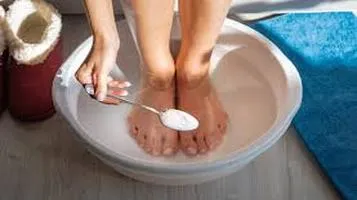Best Practices for Foot Hygiene
Maintaining optimal foot hygiene is essential for overall health and comfort. Begin by washing your feet daily with soap and warm water, ensuring to clean between the toes to prevent the buildup of dirt and bacteria. Thoroughly dry your feet, especially between the toes, to reduce the risk of fungal infections such as athlete's foot. Regularly trim toenails straight across to prevent ingrown nails and discomfort. Moisturize your feet daily to avoid dry, cracked skin, but avoid the area between the toes. Wear breathable, well-fitting shoes and change socks daily to keep feet dry and odor-free. For those prone to foot issues, consider using antifungal powders or sprays. Regularly inspect your feet for any signs of abnormality or infection and consult a healthcare professional as needed.

Foot hygiene is often overlooked in our daily routines, yet it plays a crucial role in maintaining overall health. Feet are the foundation of our mobility and bear the brunt of our daily activities. Neglecting foot care can lead to a myriad of issues ranging from minor irritations to severe infections. This review aims to provide an in-depth look at the best practices for foot hygiene, emphasizing preventive measures and routine care.
Daily Cleansing and Moisturizing
One of the fundamental aspects of foot hygiene is regular washing. Feet should be washed daily with mild soap and lukewarm water. This practice helps remove sweat, dirt, and bacteria that accumulate throughout the day. It is essential to ensure that the feet are thoroughly dried, especially between the toes, as moisture can create an ideal environment for fungal infections, such as athlete's foot.
Moisturizing is another critical component. Dry, cracked skin can not only be uncomfortable but also serve as an entry point for infections. Applying a good quality foot cream daily can help maintain the skin's integrity. It's advisable to avoid moisturizers between the toes to prevent excessive moisture build-up.
Nail Care
Proper nail care is another vital aspect. Toenails should be trimmed regularly to prevent ingrown nails, which can be painful and prone to infections. It's best to cut the nails straight across and file the edges to avoid sharp points. Using clean, sterilized tools is imperative to avoid introducing bacteria.
Footwear Choices
The shoes we wear significantly impact foot health. Ill-fitting shoes can cause blisters, calluses, and other problems. It is crucial to choose shoes that provide adequate support and fit well. Breathable materials, such as leather or mesh, can help prevent excessive sweating. Additionally, rotating shoes and allowing them to air out between wears can reduce the risk of fungal infections.
Socks also play a role in foot hygiene. Wearing clean, dry socks made from moisture-wicking materials can help keep the feet dry and comfortable. Changing socks daily or more frequently if they become damp is a good practice.
Regular Inspection
Regularly inspecting the feet is an essential preventive measure. Looking for signs of potential issues such as cuts, blisters, redness, or swelling can help catch problems early before they become more serious. For individuals with diabetes or other conditions that affect circulation, daily foot inspections are particularly critical, as these individuals are more susceptible to foot complications.
Addressing Common Foot Problems
Despite best efforts, foot problems can still occur. Knowing how to address common issues is beneficial.
- Blisters: Should be kept clean and protected. Avoid popping them, as this can introduce infection.
- Corns and Calluses: Can be gently filed down with a pumice stone after soaking the feet. Over-the-counter treatments are available, but persistent issues may require professional care.
- Fungal Infections: Over-the-counter antifungal treatments can be effective for mild cases. Persistent or severe infections should be evaluated by a healthcare provider.
Professional Care
Routine visits to a podiatrist can be invaluable, particularly for individuals with chronic conditions such as diabetes. A podiatrist can provide specialized care, addressing issues that may require more than routine home care. They can also offer personalized advice on proper foot care tailored to individual needs.
Lifestyle Considerations
Maintaining a healthy lifestyle supports overall foot health. Regular exercise can promote good circulation, which is vital for foot health. However, it is important to wear appropriate footwear during physical activities to prevent injuries. Maintaining a healthy weight can also reduce the strain on the feet, preventing overuse injuries and conditions such as plantar fasciitis.
Conclusion
Best practices for foot hygiene encompass a combination of daily routines, preventive measures, and proactive care. By incorporating these practices into our daily lives, we can maintain healthy feet and prevent many common foot problems. Foot hygiene is not just about keeping the feet clean; it is about fostering an environment where the feet can thrive, supporting our overall well-being and mobility.
Whether it is through regular washing, proper nail care, mindful footwear choices, or regular inspections, each step we take towards better foot hygiene is a step towards better health. For those with specific health conditions or persistent foot problems, professional care is a key component of a comprehensive foot care regimen. In summary, diligent attention to foot hygiene can lead to a lifetime of healthy, happy feet.






